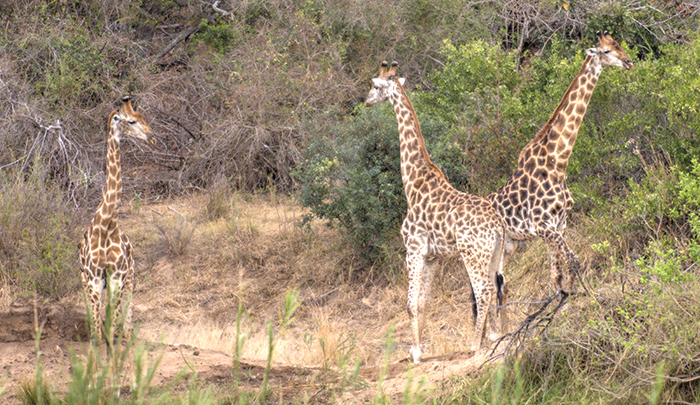
photo 28
From Simbavati, we headed south by car for a few hours' drive to the Sabi Sands where we stayed at Kirkman's Kamp. The main building at Kirkman's Kamp is the restored 1920's style home of Harry Kirkman, a nature conservationist and ranger.
We stayed 4 nights, and starting in the afternoon of the day we arrived and over the next three days, were taken by jeep through the game reserve. We got up at 5:00 am for the morning jeep ride (safari), and then went out again at about 5 pm at night. Each time we were out for 2-1/2 to 3 hours. These are the times when the animals are most active.
There were many Vervid monkeys hanging around the camp and getting into mischief. One night during dinner a moneky spotted a dinner roll on a plate. He used a tree to access the roof, then slid down to the patio near the table, and surprised the family eating there by running across the table and grabbing the bread. The monkey knocked glasses, silverware, and plates along the way, but nothing was broken.
Giraffe are magnificent creatures, and it seems everyone -- adults and children -- love them. They are easy to spot with their long necks. They sometimes use their very powerful long necks to fight each other and other animals. One strong sweep of their neck can easily take out any predator or enable one male giraffe to establish dominance over a rival.
These are two adult giraffes with a baby giraffe:

photo 28
A giraffe walking in the brush:
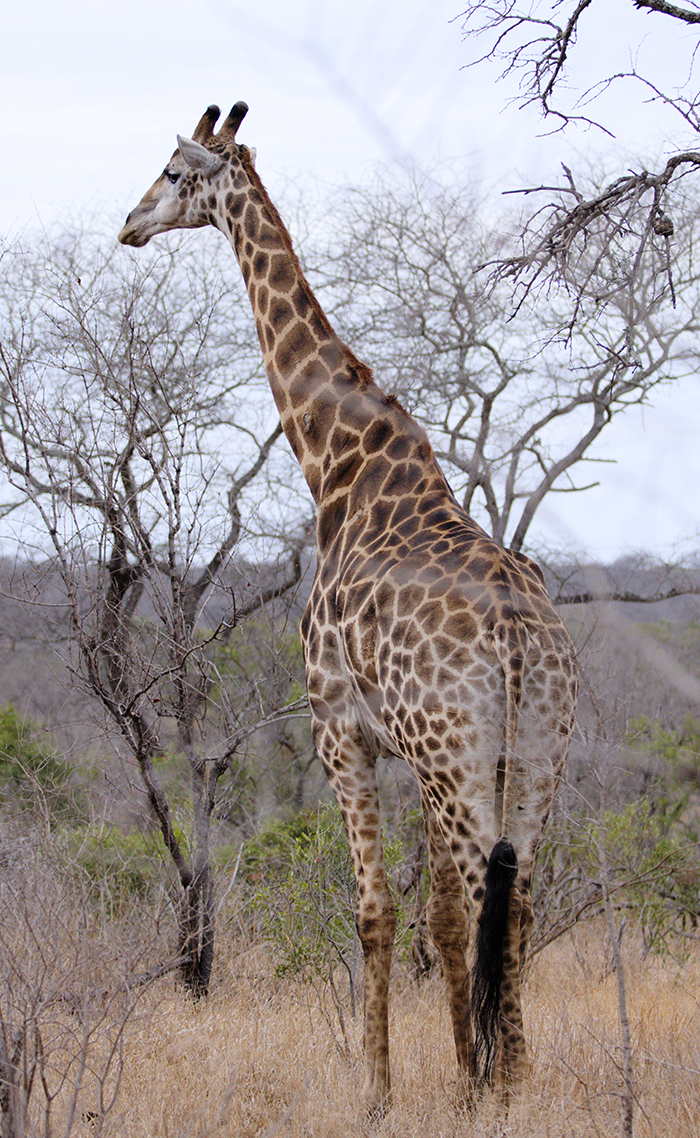
photo 29
Giraffe eating trees:
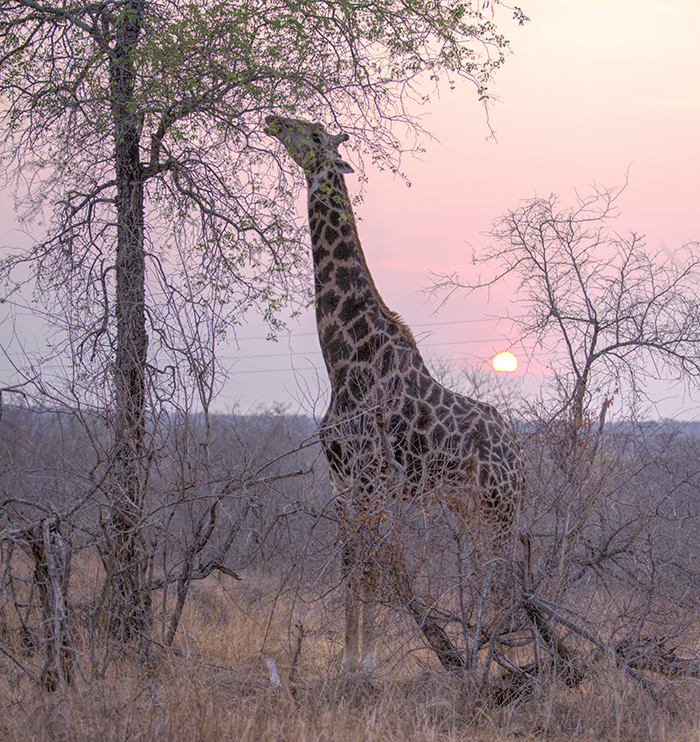
photo 30
Leopards make a territorial noise, and when the monkeys hear this noise, they also make a noise to alert other animals that a leopard is prowling around.
We came across a mom and her two cubs. This picture is of the mom and one of her cubs in a tree. The monm sleeps while her cub eats. A hyena waits nearby for the leopards to finish their meal and move on. Leopard "couples" stay together for several days for mating, and then separate leaving the mom to carry out her pregnancy and raise the cubs.
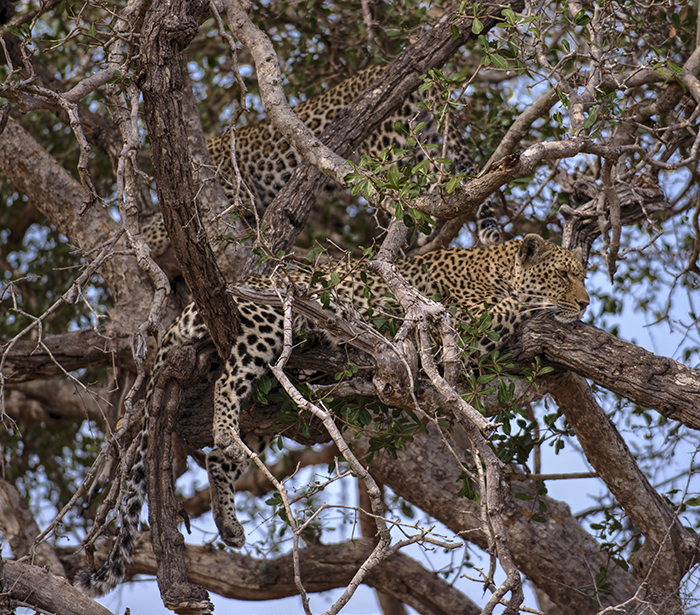
photo 31
This is the other cub napping on a termite hill. He must have gotten quite enough to eat and then decided to venture off a few yards away from the tree:
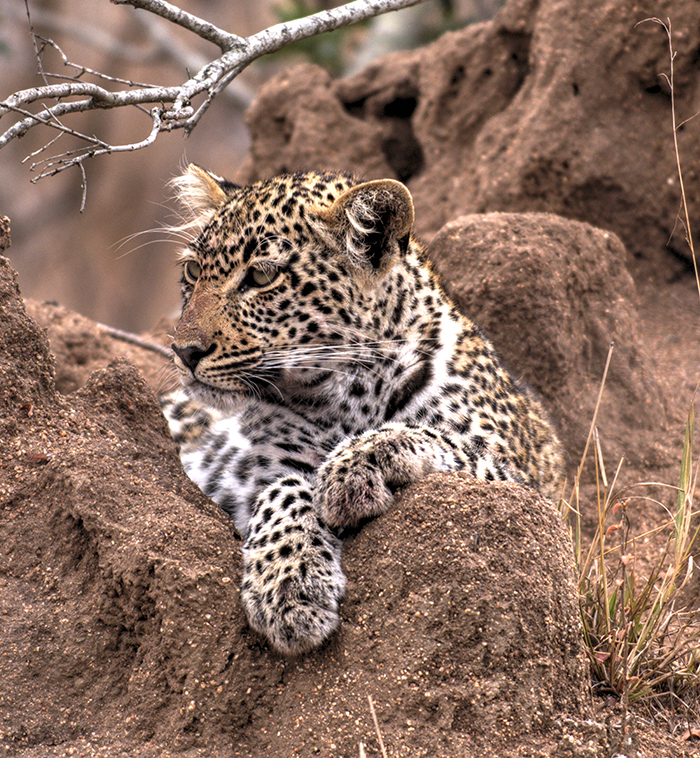
photo 32
And another shot of the leopard resting on a termite hill:
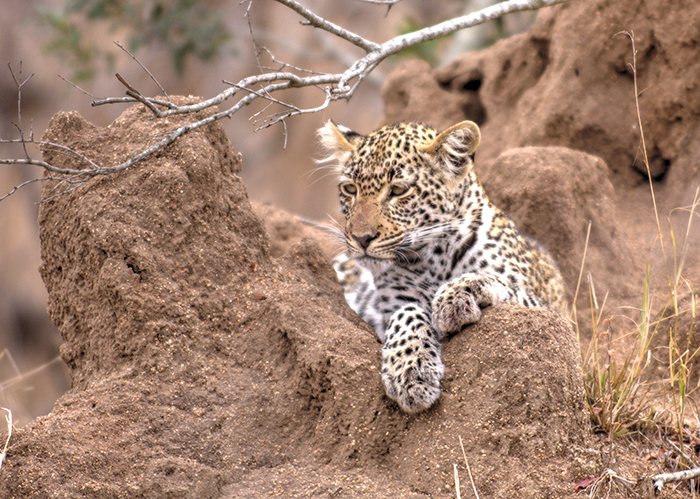
photo 33
Mom taking a nap after gorging herself:
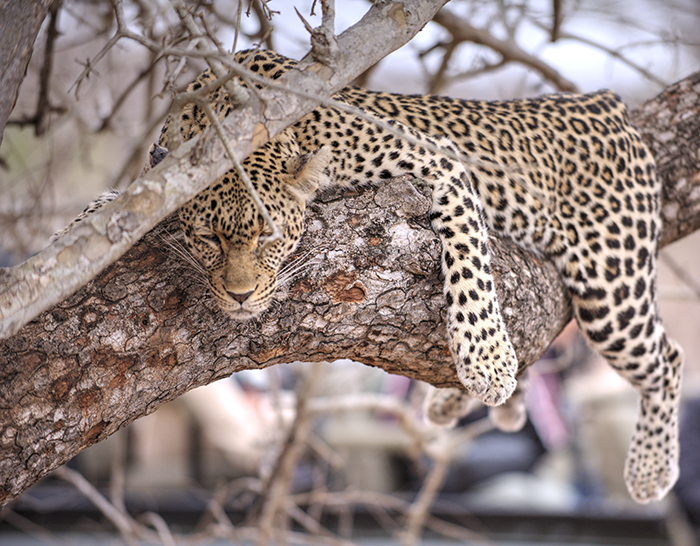
photo 34
Another shot of mom taking a nap after gorging herself:
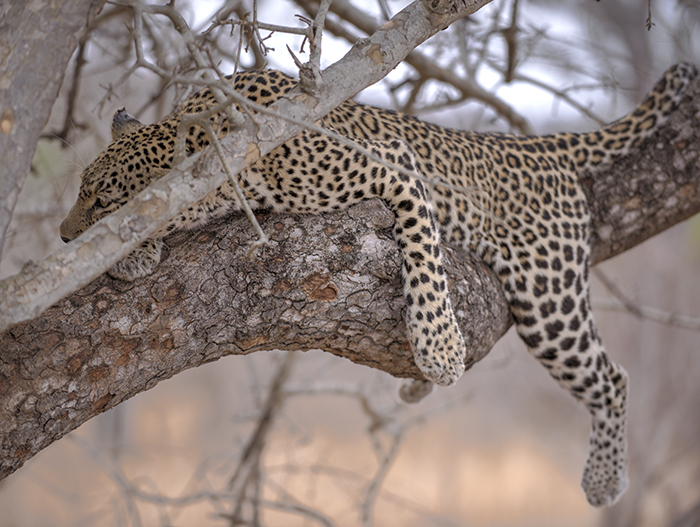
photo 35
Later, we came across one of the leopard cubs drinking from this stream next to the road:
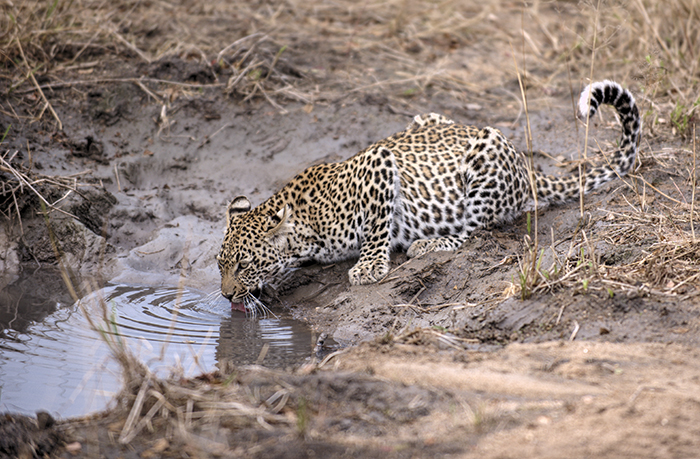
photo 36
We came across ths lion asleep on the rocks one afternoon.:
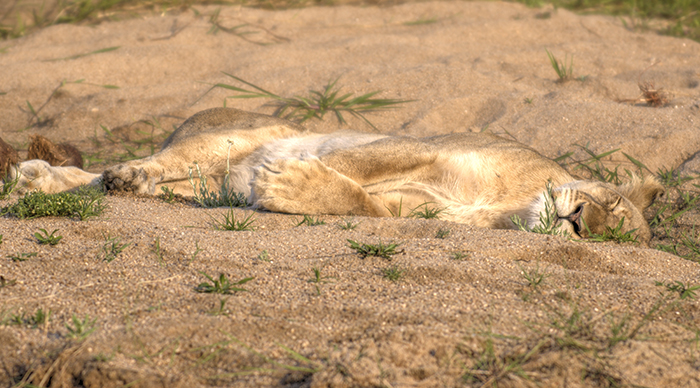
photo 37
An adult female red-crested Korhaan:
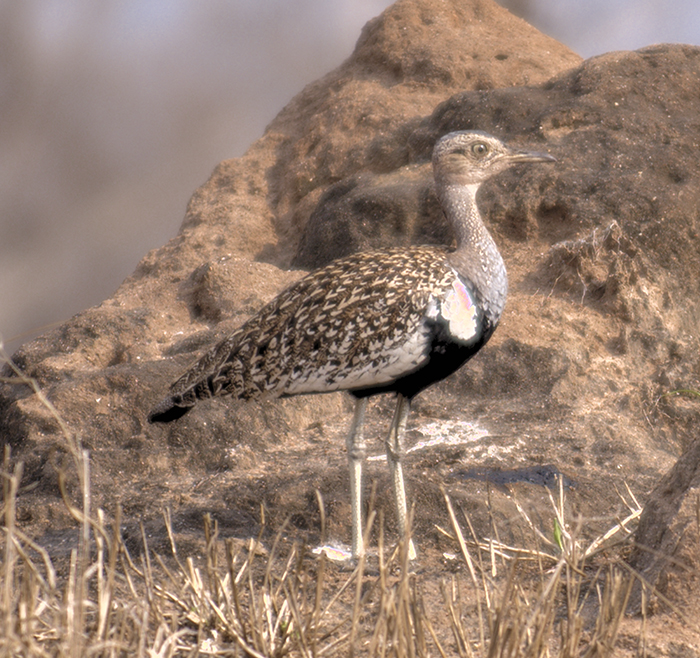
photo 38
Green trees and rocks in the bush. Most of the trees were still brown, but a few were starting to turn green. When the spring rains come, the terrain will be much thicker and greener, which makes it very difficult to spot the animals:
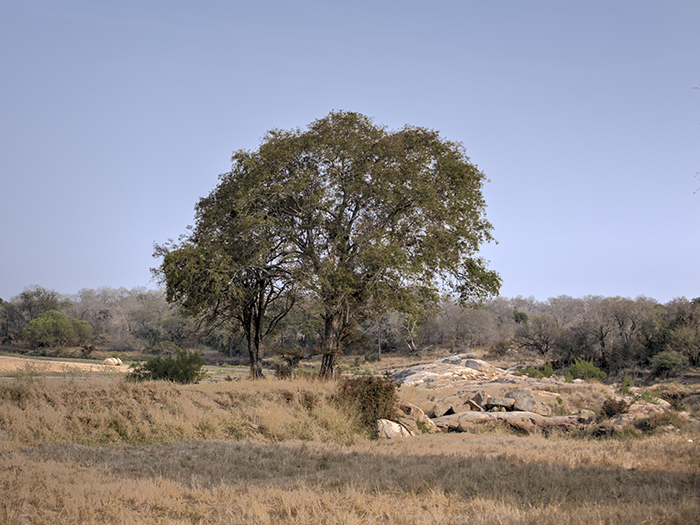
photo 39
Young elephants have 1 set of teeth that wear out if they do not sift harder items out of what they are going to eat. Baby teeth don't replace and the elephant dies if it cannot eat. Adult elephant teeth replace 8 times, and after that the adult dies if it cannot eat.
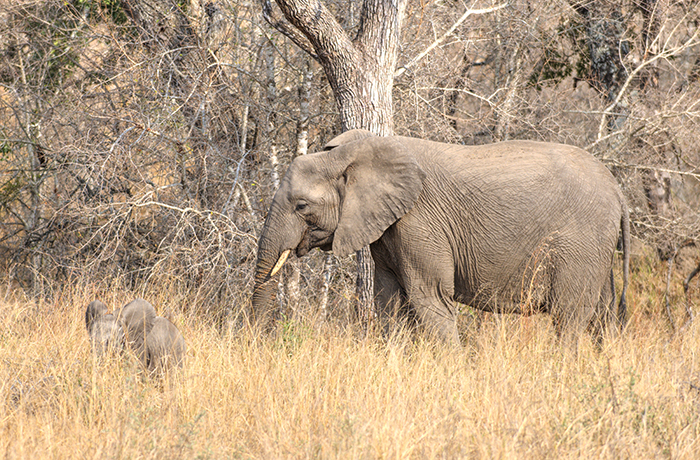
photo 40
Kudus look similar to Nyalas, except that the kudus are larger. Male kudus have horns, bu the females do not. This female is looking straight at us:
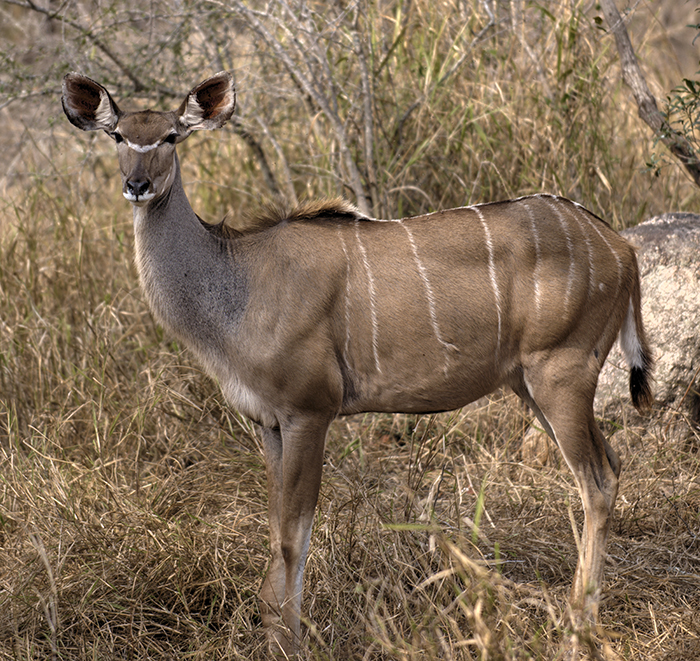
photo 41
Two young female kudus walking in the brush:
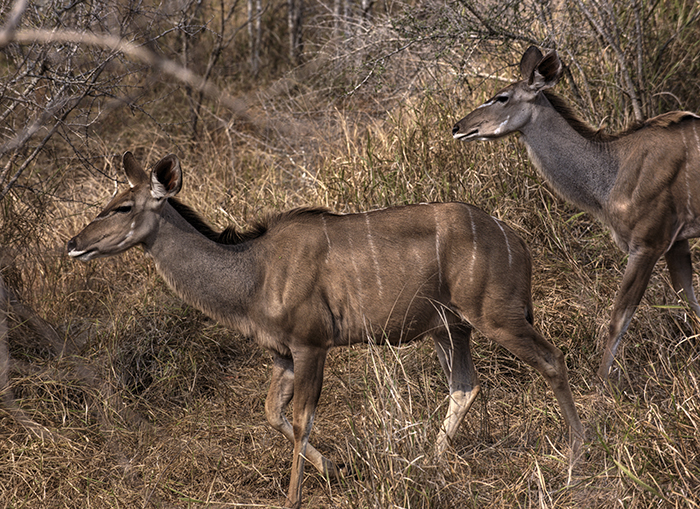
photo 42
Hyenas look like dogs, but behave more like cats, and are related to the mongoose. One hyena is capable of taking a kill from a leopard.
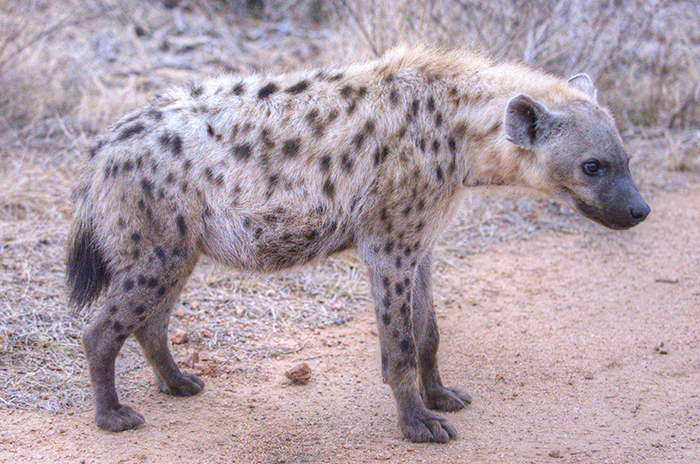
photo 43
You might have heard of the white rhino, which is not white. The name was actually wide-mouthed rhino. The local African word means both white and wide-mouthed which is certainly confusing for many people especially when they see one and it looks pretty much like any rhino because they are all about the same color.
Resting wide-mouthed rhino:
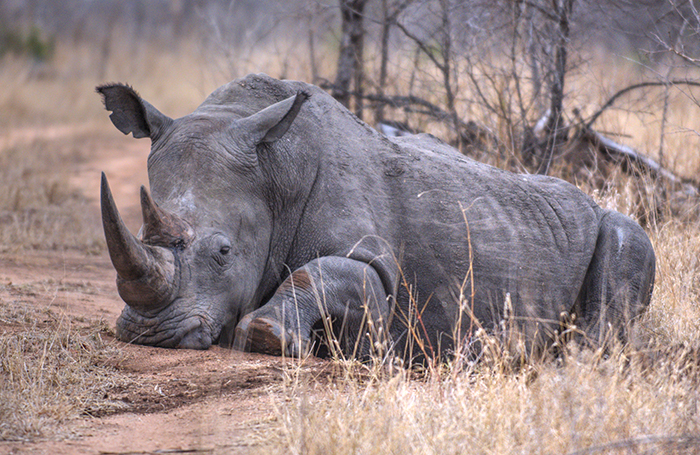
photo 44
Two rhinos walking in the bush:
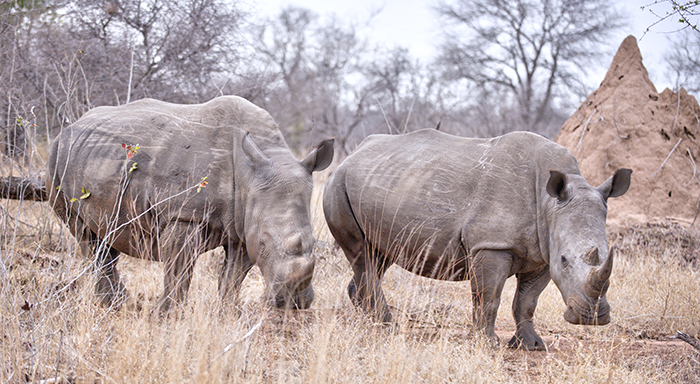
photo 45
This rhino has a Red-Bill Oxpecker hitchhiking on its head. These birds also hitchhike on giraffes and buffalos. They eat the ticks feeding on the animal.
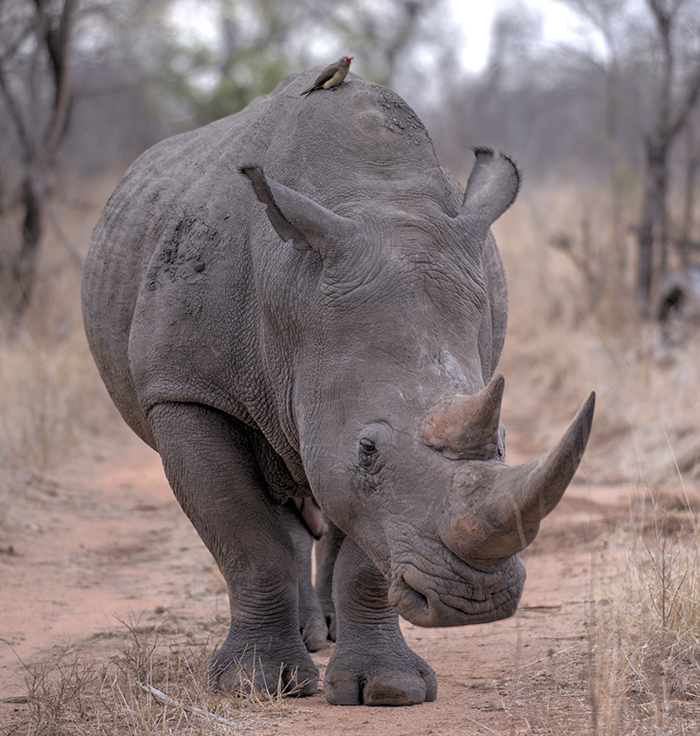
photo 46
This rhino is walking through the brush perhaps looking for food or water. If you look closely, you can see the Red-Billed Oxpecker riding on his back:
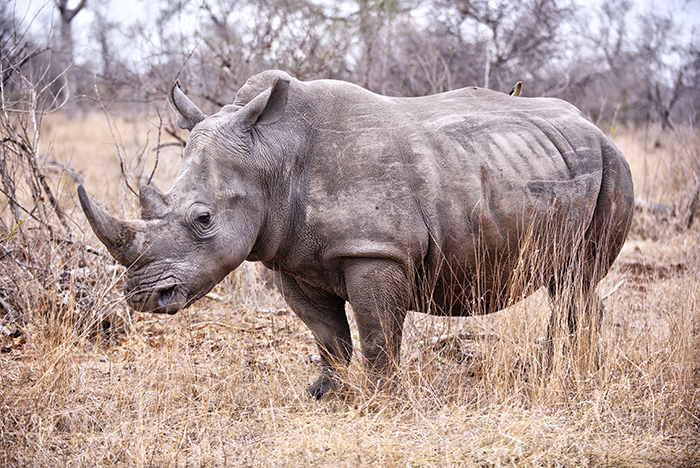
photo 47
Another shot of the rhino and bird:
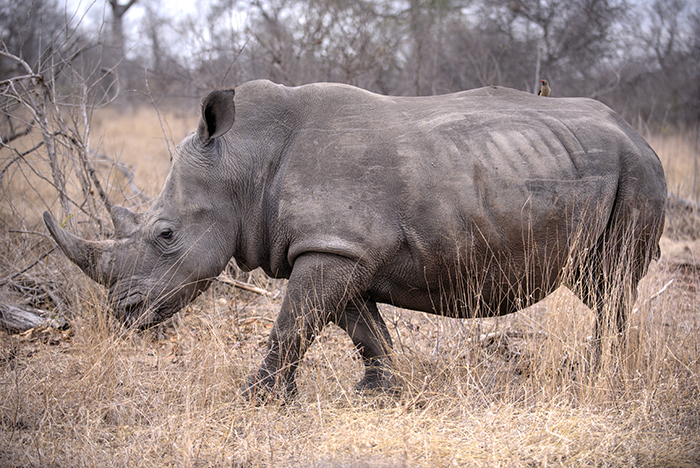
photo 48
This African tick has beautiful markings:
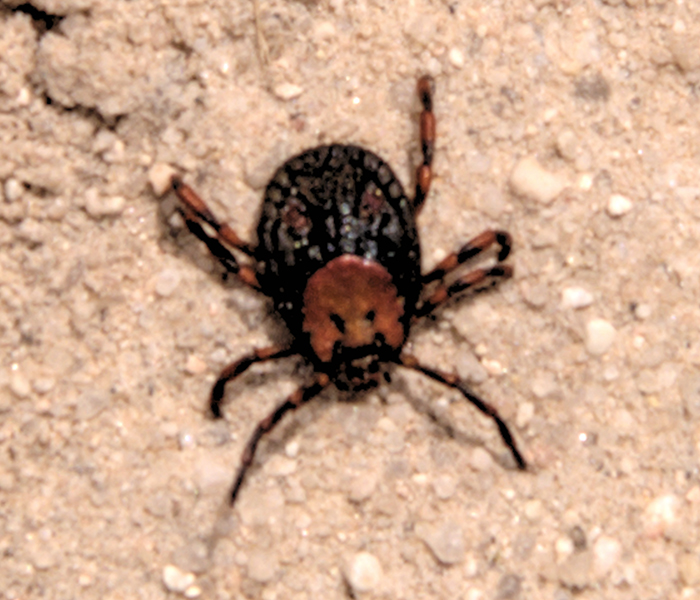
photo 49
The African freshwater turtle (terrapin) is one of many kinds of turtles in South Africa. These animals are threatened by predation and human activities:
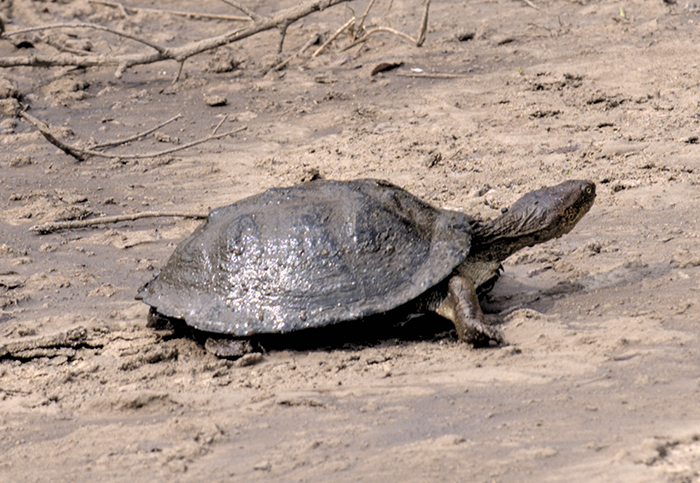
photo 50
We spotted three wild dogs who had killed a male impala, eaten their fill, and who were taking a nap. Wild dogs have a dominant male and a dominant female. They are very endangered, in fact they are the second most endangered animal. Often a few young dogs will break from the pack so that they can have more to eat when they make a kill.
While the wild dogs play and chase each other, we see the vultures lurking nearby approach and begin to feed on the carcass. Shortly after that, eagles approach to chase the vultures away and start feeding. Meanwhile, the dogs come back to retake possession of the carcass.
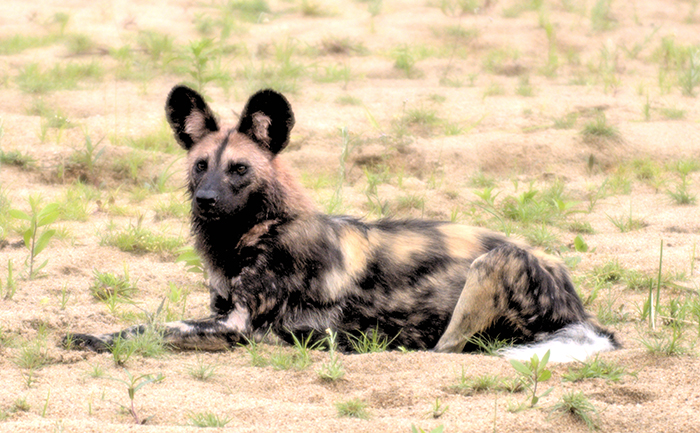
photo 51
Continue to South Africa Pretoria page
or go back to the South Africa and Madagascar contents page
© 2017 Jeffrey Pawlan